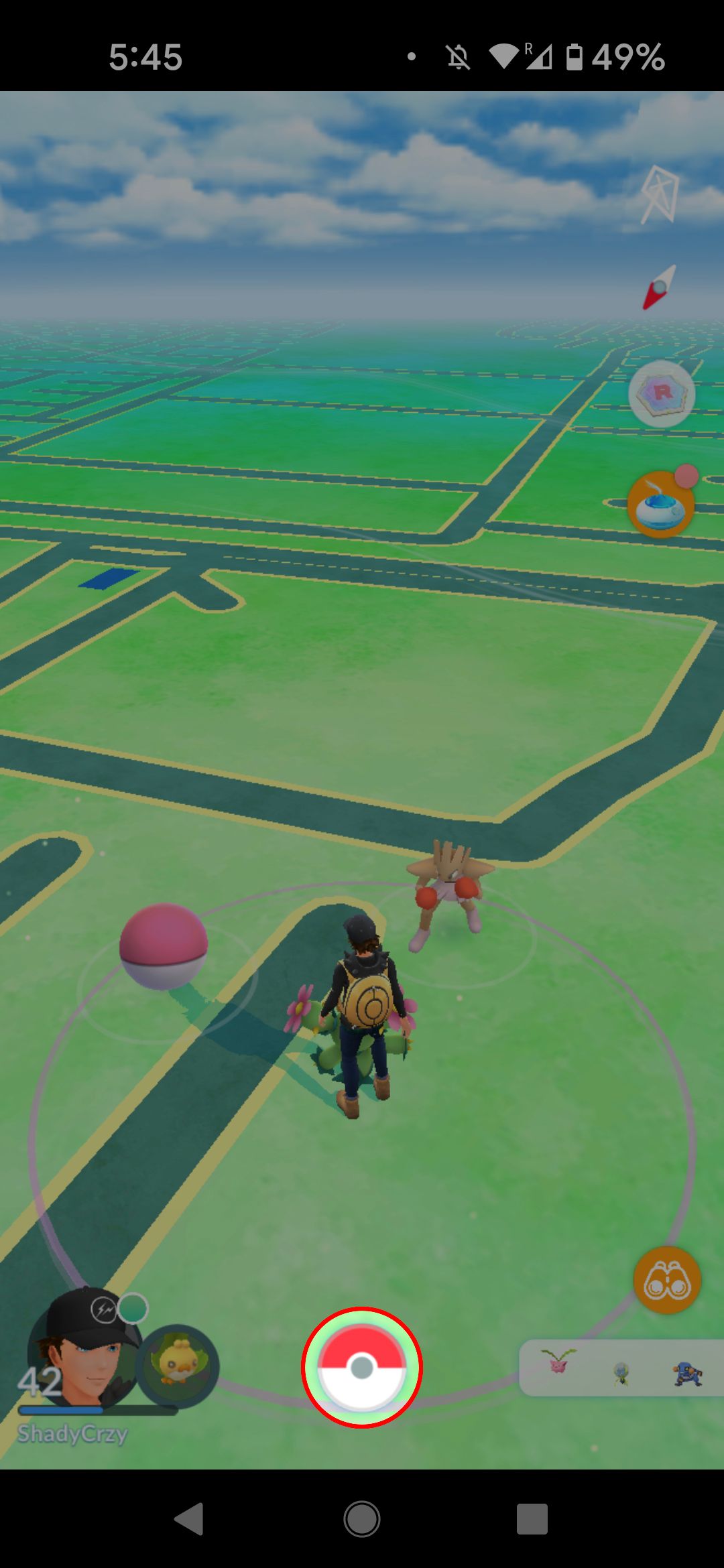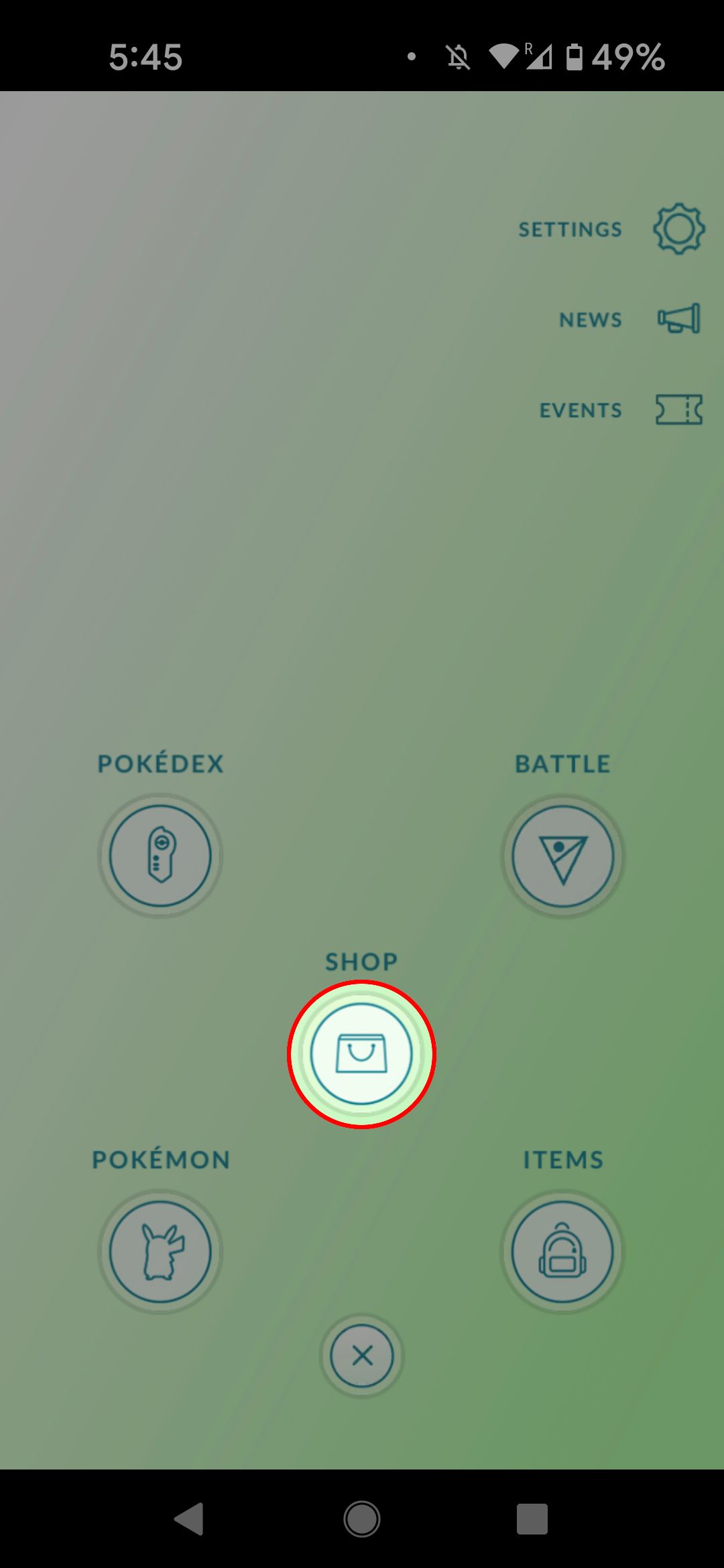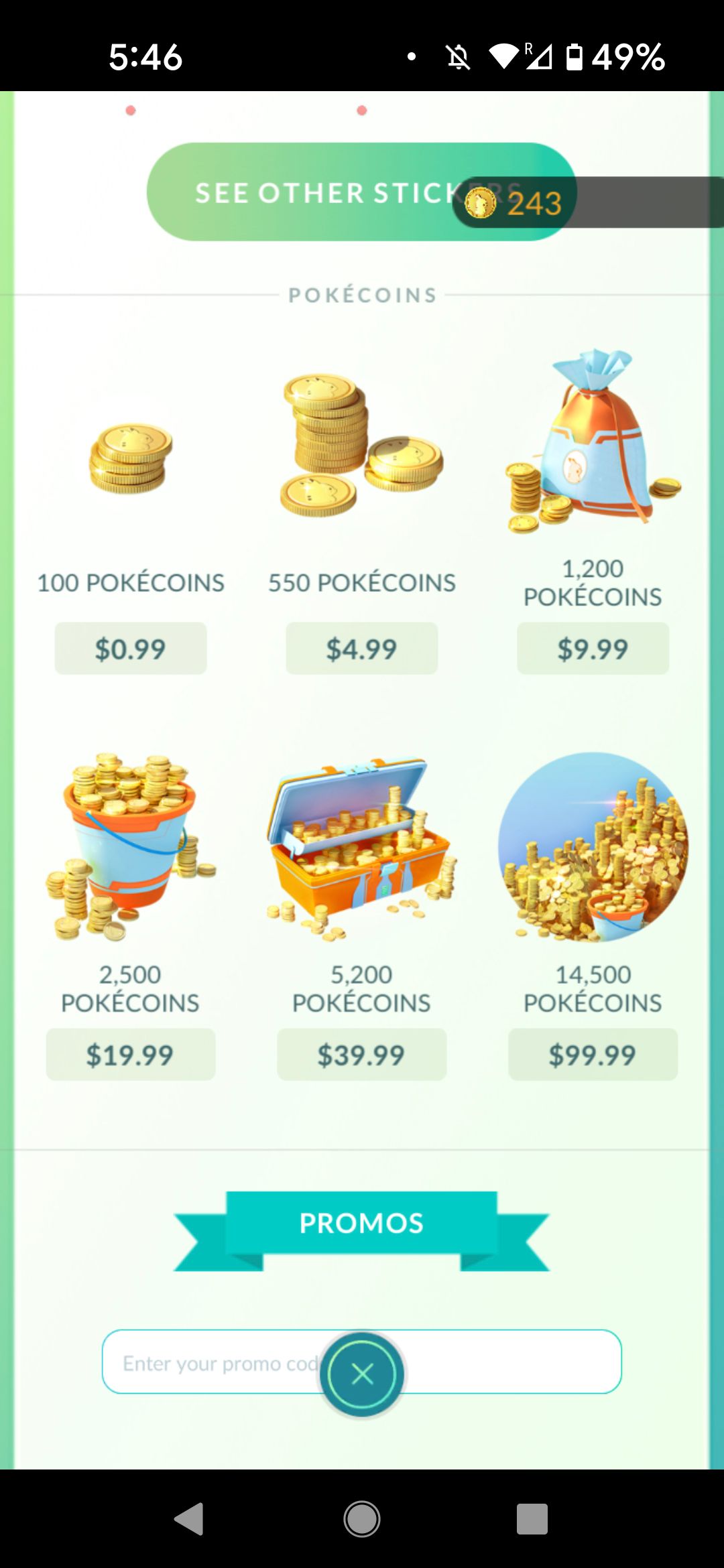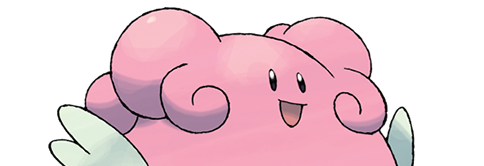Pokémon GO has been an unstoppable force in gaming for the past seven years, generating millions of dollars for its developer Niantic by using the surgical application of FOMO to drive Pokémon fans to spend their real-world cash on in-world PokéCoins. As with any free-to-play game, you don't need PokéCoins to play the game, but having them will ensure you have a more enjoyable experience, allowing you to purchase items that are difficult (if not impossible) to obtain through regular gameplay.
If you're just getting started with Pokémon GO, welcome to the community! And if you've been playing for a while, don't forget your power bank!
How to get PokéCoins
There are two ways to get PokéCoins. You can invest cold, hard cash, or you can invest time. If you want to give your money to Niantic in exchange for PokéCoins, there are six options available, ranging from 100 PokéCoins for $1 to 14,500 PokéCoins for $100. You can only purchase coins from the in-game shop. To get there from the game, follow these steps:
- Tap the Pokéball icon at the bottom of the screen.
-
Touch the Shop icon.


-
Scroll down until you reach the PokéCoins section.

- Select the coin bundle you'd like to purchase.
If you don't like to spend real money on virtual items, invest your time to get your hands on some filthy PokéLucre. Specifically, you'll have to spend your time defending a gym. For every 10 minutes you have a Pokémon in a gym, you could earn one PokéCoin.
The catch is you only receive the payout when your Pokémon is knocked out of the gym, and you can only earn 50 coins per day. That means if you have two Pokémon that are knocked out of a gym on the same day, and they've been in their respective gyms for more than a combined eight hours, you only get 50 coins.
Defending and attacking gyms
Because of this hard limit, there's no trick to getting coins other than consistently going out, visiting gyms, and leaving a defender. That means that which Pokémon you leave as a defender can make a difference in how many coins you get. If you leave something small like a Weedle or Rattata, there's a good chance they'll be booted from the gym in short order. If you leave something bulky, you stand a better chance of crossing that 10-minute threshold and earning at least one coin.
So who should it be?
Blissey. The answer is Blissey. This egg-bearing beast of a gym defender can tank so much damage that some people won't even bother spending their time trying to take it out. Still, not everyone has a beefy Blissey to help them hold off the red and yellow hordes trying to take down their gym. In that case, any high-CP Pokémon should do the trick, but you'll be better served by leaving a defender of a different type than what's already in the gym. So, if there's a Blissey in the gym, you can bet that someone will send in a fighting-type Pokémon to take it out. In that case, the best strategy would be to drop in a Pokémon that is resistant to fighting types and can tank a lot of damage. Wobbuffet or Togekiss are both good candidates for this.
The trick isn't necessarily to cause or absorb the most damage. It's to take up time and slow down the other players, making the process of taking down a gym as unenjoyable as possible. If you're serious about holding a gym, give your Pokémon berries throughout the day. This keeps its motivation up and forces an attacker to invest more time in taking it down.
When it comes to attacking a gym, regardless of which Pokémon are defending it, your approach should be the same: pick a team to exploit the weaknesses of the gym defenders. Because most of the best defenders are vulnerable to fighting-type Pokémon, bring a fighter; a shadow Machamp if you have it. Water-type 'mons are also common gym defenders, so bring something that they're weak to, like a Venusaur or Zapdos.
Timing is also important. When Pokémon are placed in a gym, they start out with a motivation meter that determines what their CP will be. As time goes on, that motivation (represented by a meter in the shape of a heart) slowly depletes at up to 10% per hour for the more powerful Pokémon, until it reaches a floor of 20%. Taking on a maxed out Blissey is a tedious task even with the ideal attacker, but it becomes much easier when it's lost 80% of its power. Wait until the motivation of the gym defenders is below 50% to save yourself some time and potions.
What to buy
Back in the early days (Pokémon GO has been out for over six years), there wasn't much to buy in the shop besides Poké Balls and expanded storage. Today, there are dozens of ways to spend your in-game money. What you should buy depends on your current goals and needs.
The Casual
Not all of us can invest more than a few minutes a day keeping up with the never-ending stream of new Pokémon GO content. Maybe you have a kid. Maybe you're in school. Whatever the reason, raids and Pokéstops probably aren't high on your list of daily must-dos. If this sounds like you, you'll probably want to maximize the time you play by buying an incense to attract more 'mons when you are playing. Consider buying remote raid passes to keep up with the latest raid-exclusive Pokémon when you can't leave the house.
The Explorer
If you play the game the way that Niantic wants you to play it, you're going to be doing a lot of walking. You need to walk to grind candy for your buddy Pokémon. You need to walk to hatch eggs. You need to walk to get to Pokéstops and Gyms. The point is, you need to walk a lot. Take advantage of all the miles you cover by picking up incubators to hatch extra eggs or grabbing an incense so you can find more Pokémon while you're exploring.
The Grinder
Some of us have an obsessive need for completion. It's not enough to have a complete Pokédex, you need to climb to level 50 as fast as possible, and nothing is going to stop you. You need the experience-doubling lucky eggs and a few premium battle passes to turn your 10,000 XP 5-star raid into a quick 20,000 XP.
The Battler
Some of us want to crush our enemies, see them driven before us, and hear the lamentation of their Pokémon. What's the point in capturing and training a pocket monster if you can't engage in a little blood sport on the side? Invest in star pieces to double the stardust you collect for leveling up your Pokémon. Like the grinders, you'll want to get some lucky eggs because as you increase your level, you also increase your Pokémons' max level.
Ghimmighoul Coins
As of late last year, Pokémon GO introduced a new coin type in conjunction with the launch of Pokémon Scarlet/Violet. The coins are used to evolve Ghimmighoul and you're going to need a lot of them if you want a Gholdengo — 999. There are a few ways to get these coins.
- Catch Ghimmighouls
- Set Ghimmighoul as your buddy
- Spin golden PokeStops
- Send postcards to your Pokémon Scarlet/Violet game
None of these methods work 100% of the time, but taken together, it shouldn't take you too long to amass your hoard of Ghimmighoul coins.
More Pokémon GO money sources
If you're caught up in the fear of missing out on a timed exclusive Pokémon, it can be easy to convince yourself to drop a few quid on a raid pass or two to make sure you keep your Pokédex at 100%, but you don't necessarily have to spend real money on your virtual goods. Instead, you can use Google Opinion Rewards to put money into your Google Play balance. For answering short surveys about your opinions and shopping experiences, Google gives you Play Store credits which you can spend like real money in Pokémon GO. It's an easy way to steadily build up credits for when you need to buy a few extra PokéCoins to get that raid pass.






